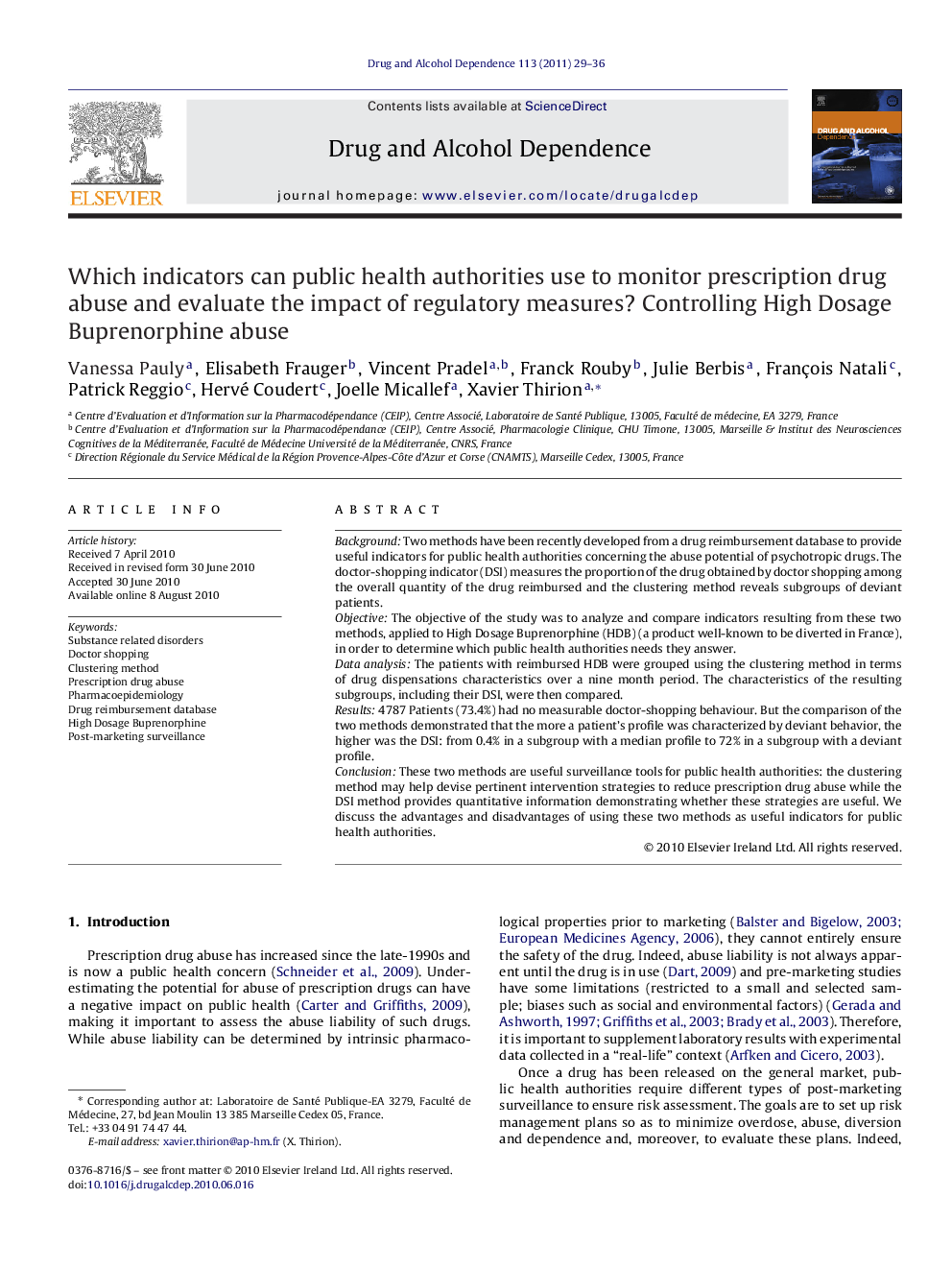| Article ID | Journal | Published Year | Pages | File Type |
|---|---|---|---|---|
| 1070392 | Drug and Alcohol Dependence | 2011 | 8 Pages |
BackgroundTwo methods have been recently developed from a drug reimbursement database to provide useful indicators for public health authorities concerning the abuse potential of psychotropic drugs. The doctor-shopping indicator (DSI) measures the proportion of the drug obtained by doctor shopping among the overall quantity of the drug reimbursed and the clustering method reveals subgroups of deviant patients.ObjectiveThe objective of the study was to analyze and compare indicators resulting from these two methods, applied to High Dosage Buprenorphine (HDB) (a product well-known to be diverted in France), in order to determine which public health authorities needs they answer.Data analysisThe patients with reimbursed HDB were grouped using the clustering method in terms of drug dispensations characteristics over a nine month period. The characteristics of the resulting subgroups, including their DSI, were then compared.Results4787 Patients (73.4%) had no measurable doctor-shopping behaviour. But the comparison of the two methods demonstrated that the more a patient's profile was characterized by deviant behavior, the higher was the DSI: from 0.4% in a subgroup with a median profile to 72% in a subgroup with a deviant profile.ConclusionThese two methods are useful surveillance tools for public health authorities: the clustering method may help devise pertinent intervention strategies to reduce prescription drug abuse while the DSI method provides quantitative information demonstrating whether these strategies are useful. We discuss the advantages and disadvantages of using these two methods as useful indicators for public health authorities.
